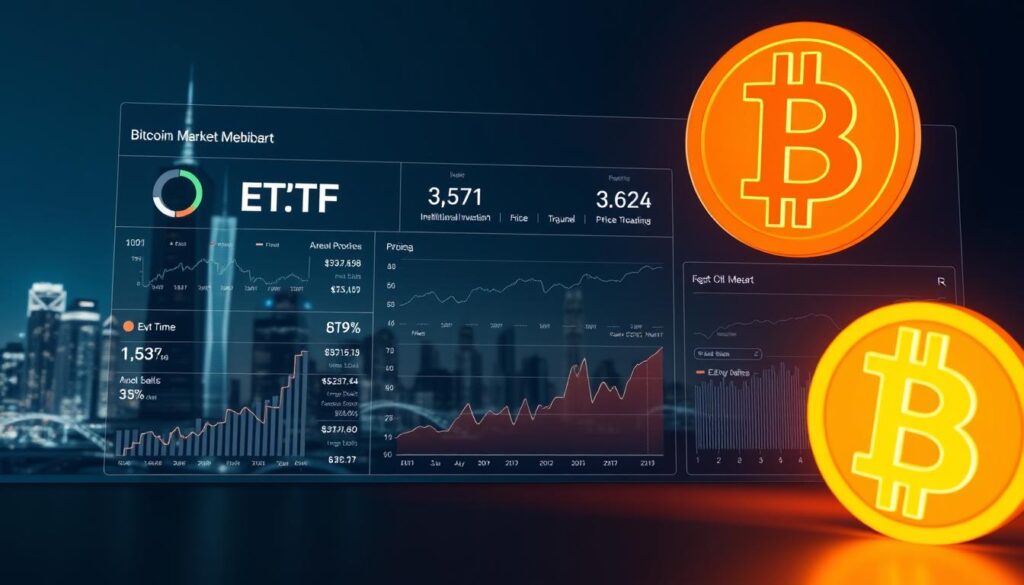Now Reading: Trading Volume Cryptocurrency Whale Activity: Trends and Analysis
- 01
Trading Volume Cryptocurrency Whale Activity: Trends and Analysis
Trading Volume Cryptocurrency Whale Activity: Trends and Analysis

In the world of digital assets, the actions of a few can impact the many. This piece explores the significant influence of major holders on market dynamics. Their large-scale transactions often create ripples across the entire landscape.
So, who are these influential players? They are entities holding vast quantities of digital value. Their decisions to buy or sell can signal potential price shifts. For this reason, tracking their behavior has become a crucial tool.
This analysis will focus on recent movements within leading networks like Bitcoin and Ethereum. We will examine how these actions correlate with overall market sentiment and price changes. The goal is to provide a clear, data-driven perspective.
We will look at historic wallet activity and modern transfer patterns. Understanding the intent behind these moves—whether for selling or strategic repositioning—is key. This article aims to shed light on these complex dynamics without speculation.
Recent Trends in Cryptocurrency Markets
Recent institutional investment data shows clear divergences in how market participants allocate funds. The patterns reveal distinct preferences between major digital assets during late October.
Historic Wallet Movements and Consolidation
Daily market activity reached substantial levels, with Bitcoin processing over $20 billion in daily transactions. This massive scale makes individual large transfers relatively small in direct impact.
The sheer size of daily exchange operations demonstrates market maturity. Even significant wallet movements represent only fractions of total market operations.
| ETF Product | Date | Net Flows | Trend |
|---|---|---|---|
| Bitcoin ETFs | October 24 | +$90.6M | Positive inflows |
| Ethereum ETFs | October 24 | -$93.6M | Third day of outflows |
| iShares Bitcoin Trust | October 23 | +$107.8M | Major contributor |
| GBTC | October 23 | -$60.5M | Offsetting outflows |
Modern Trading Volumes and Inflow Metrics
Ethereum network utilization exploded with stablecoin activity. Transfer volume surged 400% over 30 days, reaching $581 billion across millions of transactions.
The platform now hosts $163 billion in stablecoin value. This positions Ethereum as the primary settlement layer for digital dollar operations.
Trading volume cryptocurrency whale activity: Insights and Data
Examining specific transactions by major holders uncovers strategic accumulation and distribution phases. This granular view goes beyond broad market trends.
It reveals the confidence levels of influential participants. Their moves often precede significant price changes.

Analyzing Whale Transfers and Market Data
Addresses holding 100 to 10,000 ETH recently changed their strategy. After a significant sell-off in early October, they began buying back.
This reversal suggests a renewed belief in Ethereum’s value. It represents a notable shift in sentiment among savvy investors.
Individual wallet behavior provides even deeper insights. For example, wallet “0x395” moved a large amount off an exchange.
This type of transfer often signals a long-term holding intention. The funds are secured away from immediate selling pressure.
| Wallet Address | Date | Action | Amount (ETH) | Approx. Value |
|---|---|---|---|---|
| 0x395 | October 23 | Withdrawal from Binance | 12,000 | $46.3M |
| 0x86E | October 23 | Purchase from OKX | 8,491 | $32.5M |
| RadiantCapital Exploiter | N/A | DAI to WETH Swap | 2,550 | $9.7M |
Tracking these movements helps understand large investor positioning. The data shows a pattern of strategic accumulation at specific price levels.
Impact on Price Movements and Market Sentiment
Capital entering the digital asset space now flows through two distinct channels. These parallel tracks offer unique insights into investor confidence and potential market direction.

One channel is the regulated world of exchange-traded funds. The other is the on-chain movement of stablecoins on networks like Ethereum.
Short-term Price Fluctuations and Liquidation Events
ETF data from late October showed a clear split. Bitcoin products saw positive inflows, while Ethereum funds experienced outflows for several days.
This suggests institutions were making selective moves rather than exiting the entire market.
| Asset | Date | ETF Flow Trend | Net Flow Amount |
|---|---|---|---|
| Bitcoin | October 24 | Inflow | +$90.6M |
| Ethereum | October 24 | Outflow (3rd day) | -$93.6M |
| Bitcoin (iShares IBIT) | October 23 | Major Inflow | +$107.8M |
Investor Behavior and Market Consolidation
Meanwhile, stablecoin activity on Ethereum exploded. Transfer volume jumped 400% in 30 days, reaching $581 billion.
This high level of stablecoin movement indicates readiness for deployment. It often precedes buying pressure when investors swap for other assets.
Stablecoin Activity and ETF Movements
Analysts see this combination as a sign of health. High stablecoin use shows underlying activity, while mixed ETF flows point to strategic allocation.
These two capital streams support the market structure over different time horizons.
Conclusion
Large-scale holder actions serve as a barometer for institutional confidence and potential market direction shifts. While individual transfers may represent small percentages of daily operations, their collective patterns reveal sophisticated positioning strategies.
Context remains crucial when interpreting these movements. Transfers to private wallets typically signal accumulation, while exchanges deposits suggest potential selling pressure. This distinction helps separate meaningful signals from routine portfolio management.
The crypto landscape shows clear behavioral differences between major assets. Bitcoin demonstrates consolidation patterns, while Ethereum whale activity indicates renewed accumulation phases after recent distribution.
Monitoring these patterns provides valuable insights alongside traditional metrics. When combined with stablecoin activity and institutional flow data, whale movements offer a comprehensive view of market sentiment for informed decision-making.















